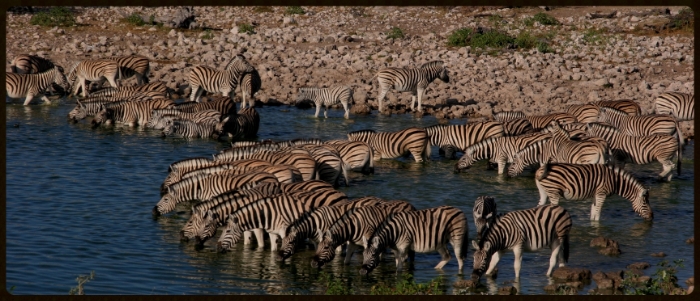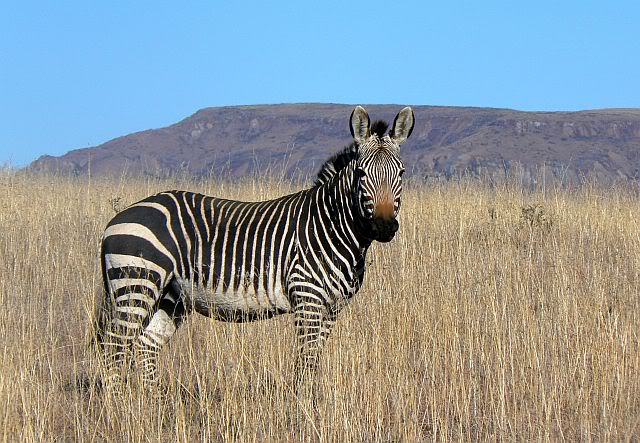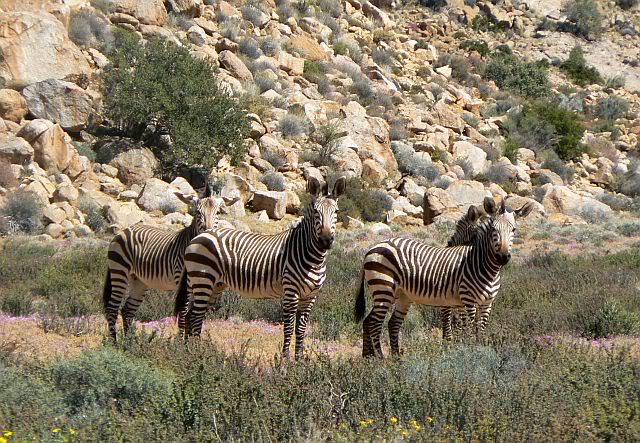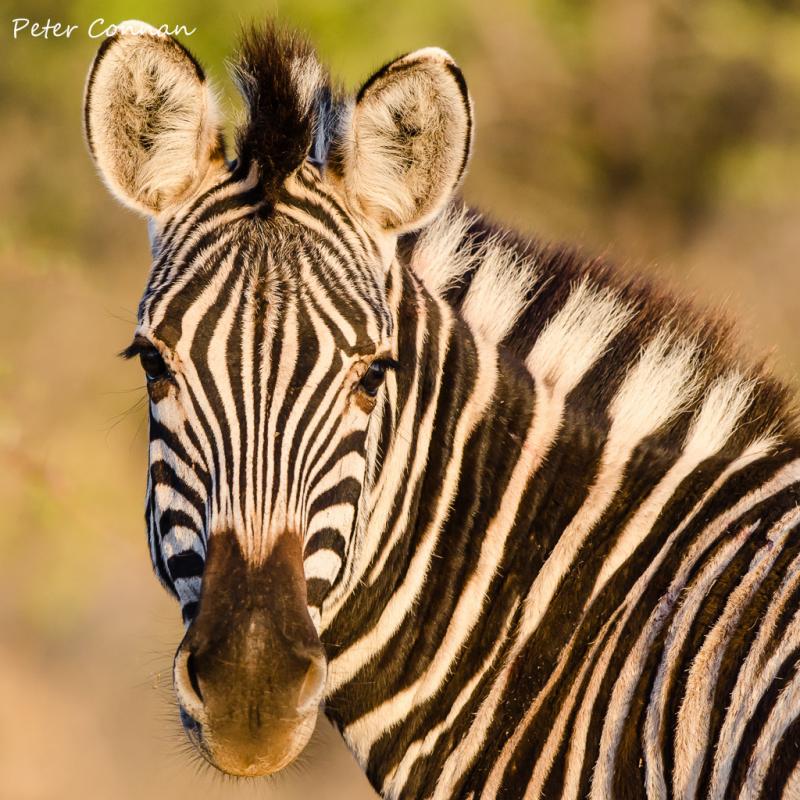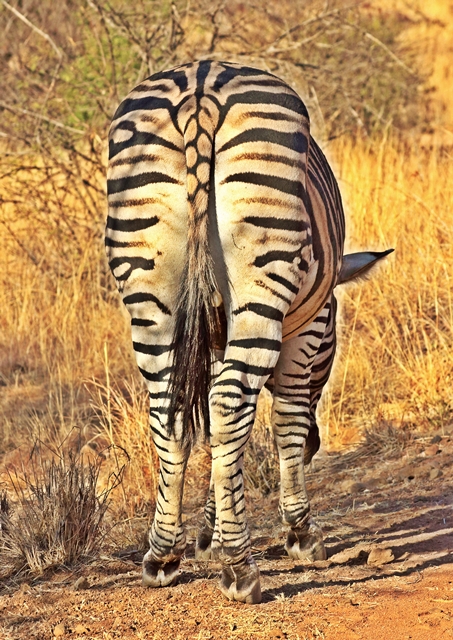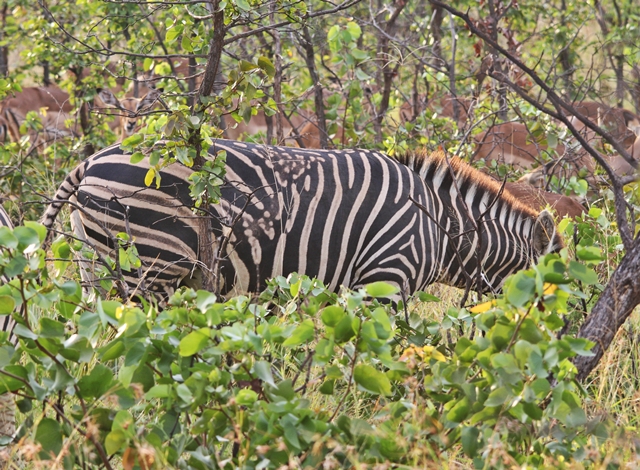Naturally as the plains Zebra tends to be more prolific and wide spread in Southern Africa we would expect a greater influx of info and pics for these most photogenic of animals. It would be interesting if anyone has pictures or submissions of the other two species, so please scratch around and submit those as well.
A few Zebra facts taken from Wikipedia: http://en.wikipedia.org/wiki/Zebra
The common plains zebra is about 50–52 inches (12.2–13 hands, 1.3 m) at the shoulder with a body ranging from 6–8.5 feet (2–2.6 m) long with an 18-inch (0.5 m) tail. It can weigh up to 770 pounds (350 kg), males being slightly bigger than females. Grévy's Zebra is considerably larger, while the mountain zebra is somewhat smaller.
Female zebras mature earlier than the males, and a mare may have her first foal by the age of three.
Males are not able to breed until the age of five or six. Mares may give birth to one foal every twelve months. She nurses the foal for up to a year. Like horses, zebras are able to stand, walk and suckle shortly after they are born. A zebra foal is brown and white instead of black and white at birth.
Plains and mountain zebra foals are protected by their mothers, as well as the head stallion and the other mares in their group. Grévy's zebra foals have only their mother as a regular protector, since Grévy's zebra groups often disband after a few months.
I'll get the ball rolling with this waterhole pic taken in Etosha
